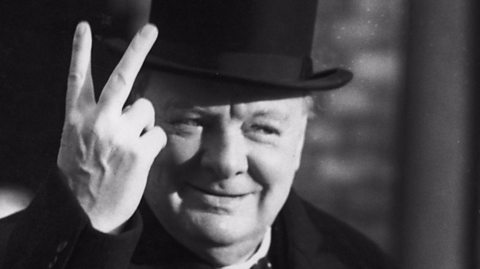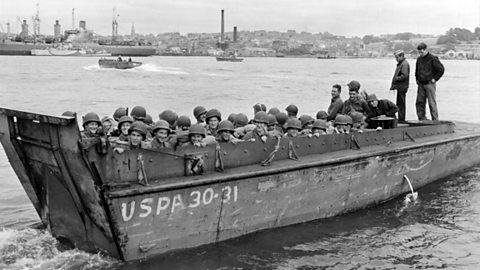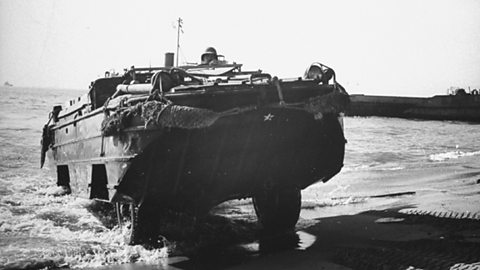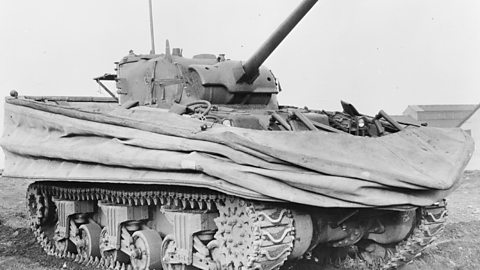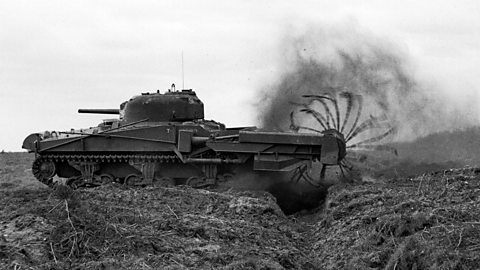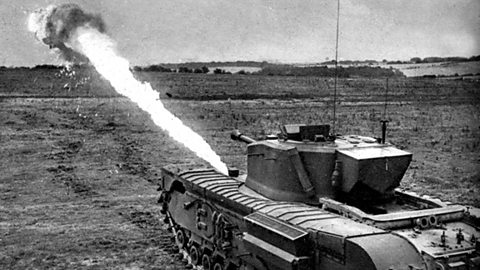D-DAY: HOW WAS THE BIGGEST EVER SEABORNE INVASION LAUNCHED?
Presented by Sophie Raworth
For centuries this body of water had been one of Britain’s greatest tools of defence. In 1944 though, it was time to use it for attack. Britain and its Second World War allies had been planning the biggest, most audacious air and seaborne invasion in history: D-Day.
Since 1940 most of Western Europe had been occupied by Nazi Germany. This invasion was vital in opening up a new front in the war.
It was to be the critical step in driving back and finally defeating Hitler’s forces. To do that the Allies would need to work out how to get an unprecedented number of soldiers, vehicles and weapons across the Channel and land them on some of the most heavily defended beaches in the world.
If they managed to get them ashore, they’d have the might of Nazi Germany in front of them and the sea behind them. With no place to hide, it was crucial that the meticulously planned operation worked.
On 5th June 1944, the Allied invasion force was ready to launch, much of it from here in Portsmouth.
Roads were teeming with soldiers and their vehicles, while a vast fleet of ships lay just off this coastline. Thousands of aircraft were ready in their airfields. All were poised to cross the English Channel.
On June 6th, the people of Portsmouth awoke to find the invasion fleet had gone. All that was left were messages of thanks chalked on to the pavements and walls by soldiers.
D-Day had begun.
'D-Day Has Come'
By June 1944, the tide of the Second World War in Europe was turning against Adolf Hitler.
The Russians were making headway in the east. In the south, British and American forces had landed in Italy and were slowly moving north. But the most direct route to Germany, through occupied France, lay untouched.
Invading France was no simple task. The Germans were expecting an attack. The north French coast was heavily fortified. Transporting thousands of troops across the English Channel and landing them on beaches in full view of enemy fire risked high casualties. To succeed would require intricate planning, ingenious invention and the mounting of the largest sea and airborne invasion the world had ever seen.
But how did the Allies do it?
A 20th Century Armada
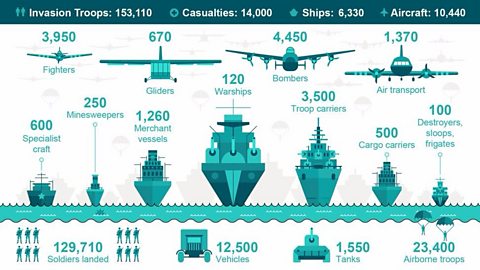
Planning every last detail
The Allied commanders faced a formidable task. The lives of hundreds of thousands of men, and the freedom of millions across Europe, would depend on them getting it right.
Eye in the sky
In the months before the invasion, Allied reconnaissance aircraft flew thousands of hours over northern France. On these daring and often low-level flights, they were unarmed apart from the cameras capturing enemy positions, defences and industry. Within hours, the images would be in the hands of 1,700 photo interpreters who built an incredibly detailed picture of the Allies' D-Day destinations.
'Send us your photos'
As early as 1942 the BBC was asked to issue a public appeal for postcards and photographs of the coast of Europe, from Norway to the Pyrenees. Millions were sent in. Combined with the aerial images, these holiday snaps helped the Allies choose their landing sites, and RAF model-makers used the data to create detailed 3D terrain models.
Beach survey
Small teams in midget submarines conducted covert surveys of the landing beaches to make sure they chose the optimum sites. They analysed water levels, beach gradients and German defensive obstacles and took sand samples to check the beaches could take the weight of Allied vehicles.
When to land
The Allies wanted to land at first light when it was low tide, so hidden obstacles could be seen. British mathematician Arthur Thomas Doodson was enlisted to work out the tidal patterns using mechanised calculators, revealing that 5-7 June would provide the best combination of full moon and ideal tidal conditions.
Dress rehearsals
Rehearsal invasions taught the Allies vital lessons for the real thing. At Slapton Sands in Devon, poor communications meant that men stormed the beach under a hail of live artillery fire, suffering many casualties. Standardised radio frequencies would be essential on D-Day itself.
Weather forecasting
A meteorological team, led by Captain James Stagg, pored over data from observing stations, reconnaissance flights and weather balloons, to work out what the weather conditions would be like in Normandy. Stagg predicted that 5 June would be too stormy for a landing, but a break in the weather would make the invasion possible the next day.
Sophie Raworth explores the meticulous planning behind D-Day.
Planning every last detail
Presented by Sophie Raworth
At midday on 6 June, several hours into D-Day, Prime Minister Winston Churchill announced to the House of Commons that Allied troops had landed in France.
He said: “The commanders who are engaged report that everything is proceeding according to plan…and what a plan!”
The decision to put that plan into action was made right here at Southwick House near Portsmouth. US General Dwight D. Eisenhower, leader of the Allied forces, was the man who made it, confident that everything that could have been thought of had been.
He knew that he was sending his soldiers off to France with the best maps available. Aerial reconnaissance and reports from the French Resistance had provided minute detail of the terrain and German defences.
Meanwhile, covert Royal Navy teams in mini submarines had surveyed the beaches. He knew his team of commanders had planned every detail, even conducting dress rehearsals along the British south coast.
He knew that now was the best time to invade. Clear weather and smooth seas were more likely in June and the 5th to the 7th would provide bright moonlight for the air invasion and early-morning tide for the seaborne troops.
But even the best-laid plans could go wrong.
Bad weather had already forced Eisenhower to delay for 24 hours. Now he had to gamble that his meteorological team had correctly predicted a 36 hour break in the weather.
Eisenhower’s words, “OK. Let’s go,” sent his commanders rushing to their posts. Left alone, he could only trust and hope that the exhaustive preparations would be enough to win the day.
Innovation to overcome the enemy
Under the command of Field Marshal Erwin Rommel, Germany had prepared for the invasion its leaders knew would come. The Allies needed to think their way around the formidable firepower, obstacles, and minefields of the Nazi's ‘Atlantic Wall’.
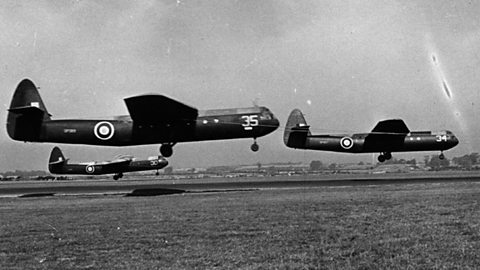
Image caption, HORSA GLIDER: The Allies needed to land troops silently behind enemy lines. This glider made from plywood and fabric was released by a plane over France and piloted to its target. Some reached their objective safely, but others crashed off course.
1 of 6
Building a DIY harbour
Delivering an invasion force of the scale of D-Day would require a huge harbour. Capturing one would be far too dangerous; instead the Allies brought their own.
Designed by Major Allan Beckett of the Royal Engineers, the temporary 'Mulberry' harbours were built over six months by around 55,000 workers from 210,000 tons of steel, 1,000,000 tons of concrete. They still stand as one of the greatest civil engineering feats of modern times.
Sophie Raworth on the ingenious Mulberry harbours built for D-Day.
BUILDING A DIY HARBOUR
Voice of Sophie Raworth, broadcaster
When the Allied commanders were planning D-Day, they knew that they couldn’t rely on capturing harbours by direct assault. It was just too dangerous.
So how would they keep the invasion force supplied once it had landed? One answer was to land supplies and personnel directly onto the Normandy beaches but unpredictable weather might make that impossible for days at a time. So the Allies came up with an insurance plan. They would build two huge artificial harbours in pre-fabricated sections, tow them across the Channel and fit them together off the Normandy coast.
Code-named Mulberry, each harbour was formed using sunken break-waters made from hollow concrete blocks and old ship hulks. This created calm water where Allied vessels could drop anchor.
Ships unloaded at large steel pier heads which were raised and lowered on four extendable legs depending on the tide. These pier platforms were connected to the beach via long steel roadways that rested on hollow concrete and steel floats.
Building the harbours was a massive undertaking requiring 210,000 tonnes of steel and 1 million tonnes of concrete. Around 55,000 workers were involved building different sections in teams spread across the country, but they had no idea what they were really making. On 6 June, the two Mulberry harbours were ready. One was constructed off Omaha Beach in the American sector while the other was off Gold Beach in the British sector.
They were both operational within 12 days of D-Day and could move up to 7,000 tonnes of vehicles and supplies per day. Although the US harbour was destroyed in a storm, the British harbour saw heavy use for six months, even though it had been designed to support the force for just three.
Taking their own harbours gave the Allies the confidence to attack the less heavily defended beaches of Normandy and provided an essential supply line for their advance. As Nazi minister Albert Speer conceded, it had been an idea of simple genius.
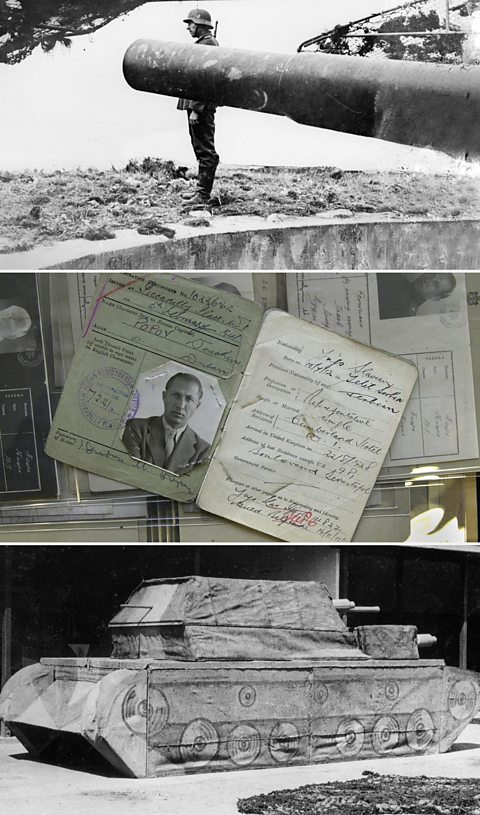
The art of deception
The Allies knew that even with their combined strength of forces they would be up against formidable German defences. Surprise, would be vital. So they created a vast deception to mislead the Germans about when and where the invasion would take place.
Bodyguard
The plan was known as Operation Bodyguard, after Winston Churchill’s comment that in wartime, the truth should “always be attended by a bodyguard of lies.”
Double cross
The Allies used double-agents to feed information back to their German controllers. Elaborate tricks suggested the Allies might invade across the narrowest part of the English Channel, at the Pas de Calais, or through Gibraltar, and even Norway. Three agents, known as ‘Garbo’, ‘Brutus’ and ‘Tricycle’ were particularly valuable as they were well-trusted by their German controllers.
Artificial army
Backing up the spies' stories were fake armies. The most important of these was the hoax 1st U.S Army Group in Kent, which was placed under the command of U.S General George Patton.
Inflatable tanks
Roads and fields were lined with dummy tanks, trucks and aircraft. Fake landing craft were placed along the southeast coast of England. German Luftwaffe planes were occasionally allowed to fly over to take aerial photographs. The Allies also simulated the radio communications that would be expected for such a group.
Pretend paratroopers
Nearer the time of the invasion the Allies dropped twice as many bombs on the Pas de Calais as they did on Normandy. Even on D-Day itself, Allied planes dropped dummy paratroopers and tin foil to confuse German radar and maintain the idea the invasion would come further north.
Keeping the secret
The real invasion plans were kept top secret, with only the most senior British and American commanders in the know. Movement in the south of England was restricted in the months leading up to D-Day, with a coastal strip up to 50 miles deep in places out of bounds to all but authorised personnel.
Intercepted German transmissions showed that when it came, the Germans were still thoroughly confused as to the time and place of the actual invasion.

Learn more about this topic:
D-Day: The Last Heroes. collection
Historian Dan Snow examines how two years of meticulous planning shaped the D-Day landings in these short films for secondary schools.
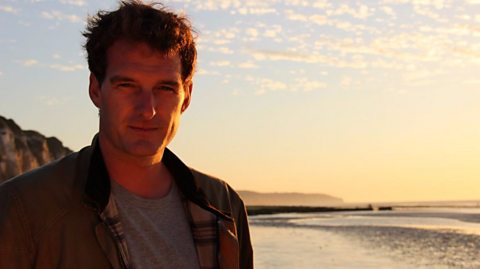
WW2: How close did D-Day come to failure? document
Over 150,000 British, US and Canadian soldiers had landed by air and sea and pushed their way several miles inland. But what if the invasion hadn't gone to plan?

WW2: Did Winston's words win the war? document
Winston Churchill is revered as one of history's great orators, but just how crucial a role did his speeches play in winning World War Two?
